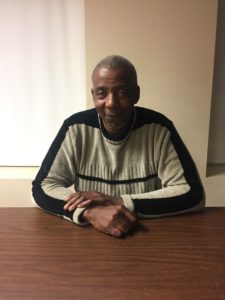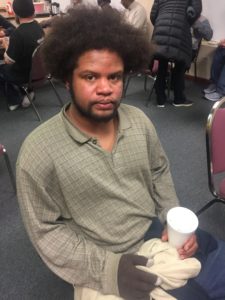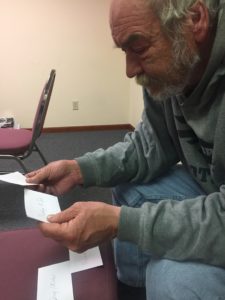Great job synthesizing your research team! Next up, coming up with ideas that meet your Design Criteria and creating physical manifestations of these ideas to share with users.
Author: Wendy
Moving on to Ideating…
You are capturing some good insights. I’d like to see more user quotes to support your GP’s. Next up, coming up with ideas that meet your Design Criteria and creating physical manifestations of these ideas to share with users.
Moving on to Ideating
Really great job with synthesizing your research! This week we will begin working through how to make physical manifestations of ideas.
Now on to Ideating…
Great job with the synthesis team. We will begin bringing these concepts into tangible manifestations next.
Moving on to Ideating…
Fascinating insights captured Johnny! Nice work!
Moving on to Ideating…
Great work identifying the range of patterns. There are certainly some basic and obvious needs uncovered around being a safe environment for example, but I am thinking the interesting innovations will come from identifying the specific opportunities of impacting the decision – by parent and child. We choose a school because it is the best for us to help us accomplish our goals… so those may be career-based (what college could I get in to?), skills-based (what job can I get right away?), or social-pressure based (just doing what your peers do – great note on how this varies based on the district). How does Clay compare with other Art Magnets in the country?
Moving on to Ideation…
Great work on the Guiding Principles! They are clear and well supported. This is such a complex problem. Especially when you consider the view of the various stakeholders. Does South Bend want to be the city known for the homeless services? When and how might this be a good idea? And the insight around helping the person remember what a good day is really great. What would be the bigger effects of this I wonder?
Moving on to ideation
Team – You have captured great feedback from the experts and from the kids. For your Guiding Principles, add more user quotes and note some user characteristics after each quote such as age, race, if active with the club.
We are looking to move beyond the obvious now. As we being building prototypes and getting feedback, how can we solve this problem in a new-to-the world way? How much will you need to work with parents? Schools? The transportation company? The Club? In the Design Criteria, we need to call out that the solution needs to be easy, convenient, and be a status builder for the teens.
Design Criteria
Design Goal
- Homeless people come from very diverse backgrounds, and every person had a unique pathway into homelessness.
- While the basic needs of food and temporary shelter are currently being met for most homeless people, their higher needs, such as a sense of belonging and self-esteem are not.
User Perceptions
- Many facilities, including CFH, have barriers that keep homeless people from using them, especially strict drug and alcohol rules
- Users desire services that are convenient, free, with few questions asked.
Problems/Needs/Opportunities
- Substance abuse and mental illness are huge barriers to conforming to rules and consistent behavior
- Unemployed users have excessive free time during the day when they are idle. This lack of purpose creates opportunities for people to get in trouble.
- Many homeless people use the same resources every day – soup kitchens, showers at the church, and the weather amnesty program. These provide opportunities for touch points to connect with users.
- Users have very little guidance from family, friends, or counselors, and many do not think about long-term plans to exit homelessness.
Functional Attributes
- The solution needs to be flexible and able to personalized based on mental illness, substance abuse, etc.
Constraints
- The source and amount of funding will be a major constraint in thinking about solutions. Unfortunately, we do not yet have an idea of how much is a feasible amount we could work with.
- Our solution will focus specifically on the homeless in South Bend who are currently unsheltered
- Our solution will focus on users who are willing, but not yet able to exit homelessness. This may exclude those who feel complacent in their current homeless situation.
- Our solution will not be able to meet all of the individualized needs of homeless people. We will need to focus on specific, actionable, and common needs.
Guiding Principles
Guiding Principles:
1. Meet me where I’m at
Reduce the barriers - don't discriminate against people struggling with addiction, mental illness, etc.
- “Some of them have been guests of the CFH or other shelters in town. But each one of the facilities in town has a structure. There are certain rules and regulations you have to follow in order to stay there – the most prominent one: no drugs or alcohol. Some people can’t stay off that stuff.” – Peter Lombardo
- “You have to let the drug users in if you’re going to help them.” – David

- “I was not on the verge of ‘addicacy.’ I’m not an addict, not technically. I’m like half and half.” – Silas

2. Make it convenient
Bring the services to the them - don't make themwork hard to seek them out. Make it easy for them to say yes.
- “The Oaklawn Center is a long walk. About 30 minutes. That might keep some people from going.” -Steve B.
- Practically all of the services that Steve B., Steve A., and Ed use on a daily basis are within 10 minutes of walking.
- According to Peter, many homeless in the regional area travel to South Bend seeking out the convenience of the services.
3. Remind me what a good day is
“Good days are all the same. I have a couple beers a day. I never drank before, but now I’m drinking a lot more than I used to cause that’s what keeps it coherent. I don’t even know what would make a bad day anymore. They’re all bad.” -Ed

“Getting caught out in the weather during the day – that would be a bad day. A good day? Everything goes like it’s supposed to. Make appointments on time.” – Steve
Users generally lack structure in their day. They have minimal interactions with other homeless or citizens, and these interactions are often tense. On a normal day, they have nothing to look forward to.